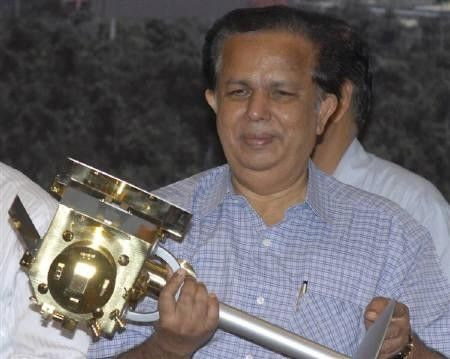Indian Moon Landing: Contact Lost With Vikram Lander During Latest Attempt

During its latest attempt to land on the moon, the Indiana Space Research Organization (ISRO) on Friday lost contact with its Vikram lander as it approached its destination. India was aiming to become the fourth nation to soft-land on the moon and the first to land near its south pole. Prime Minister Narendra Modi was present during the final minutes before the loss of contact, approximately when the unmanned lander was scheduled to land.
“Vikram lander descent was as planned and normal performance was observed up to an altitude of 2.1 kilometers [1.3 miles],” ISRO director K. Sivan said in an announcement. “Subsequently the communications from the lander to the ground station was lost. The data is being analyzed.”
Sivan could not say when the organization would be able to provide updates on the lander’s whereabouts, Space.com reports. Data appears to indicate that the lander was approximately 0.2 miles, or 0.33 kilometers, from the lunar surface when contact was lost. One estimate indicated that the Vikram lander was 0.6 miles, or 1 kilometer, off-track from its intended landing site.
Prime Minister Modi also made a statement in the wake of the mission failure.
“Be courageous,” he said. “What we achieved is not small. Wish you all the best.”
The complete Chandrayaan-2 system consisted of three parts: an orbiter, the lander known as Vikram, and a rover known as Pragyan. The system was designed to examine the lunar surface for one lunar day, about 14 days, before shutting down due to the unbearably cold nighttime temperatures on the moon. The orbiter segment of the system will continue to study the lunar surface from afar for one year.
© Copyright IBTimes 2024. All rights reserved.





















